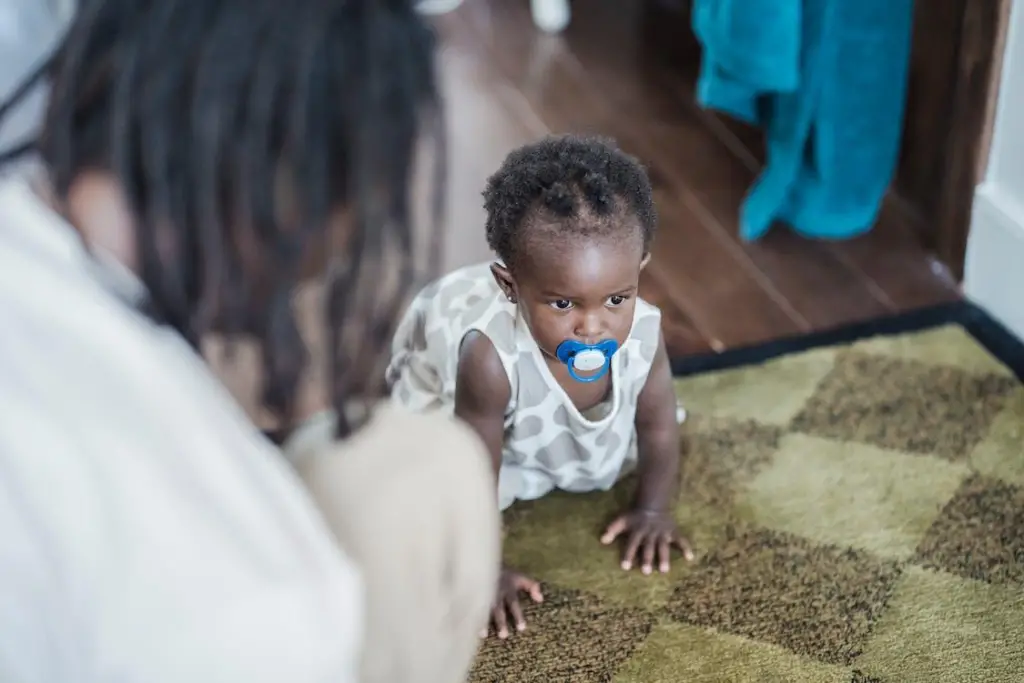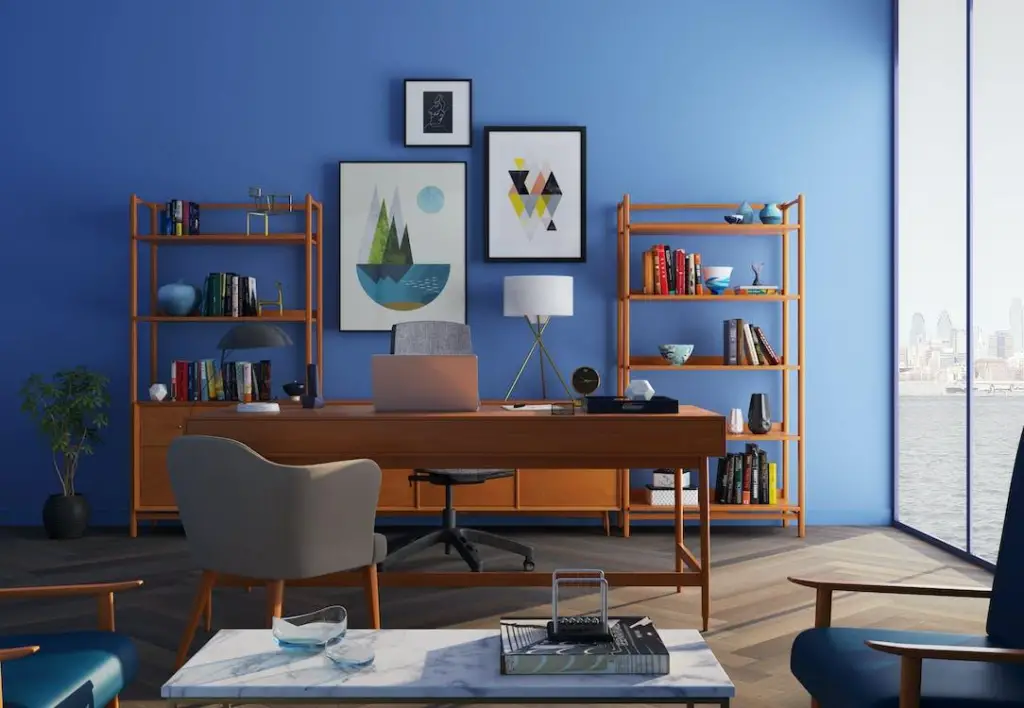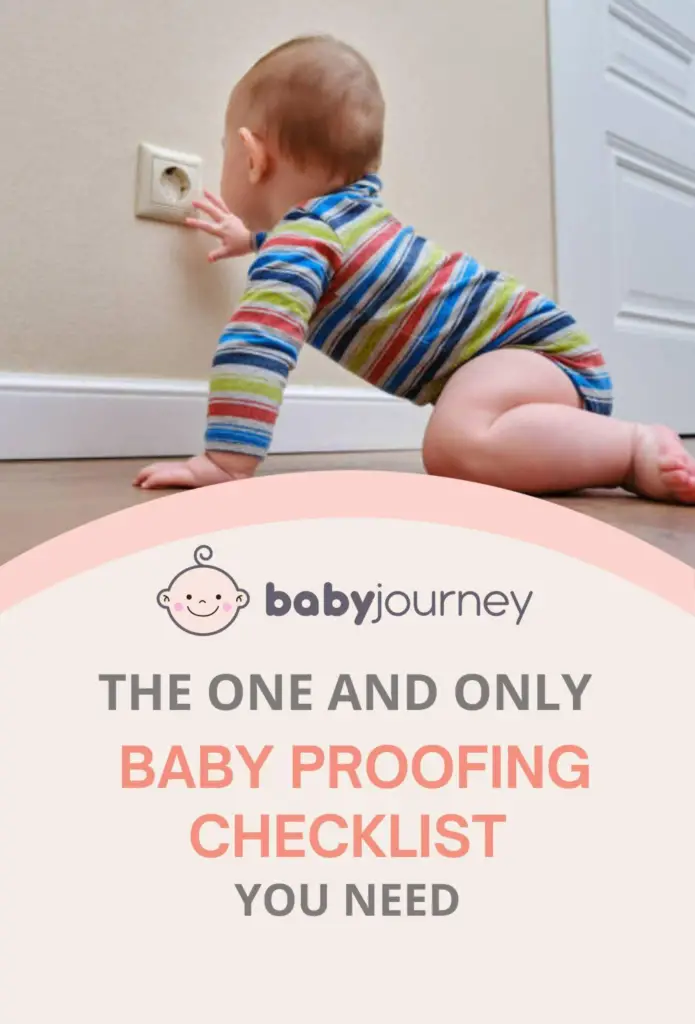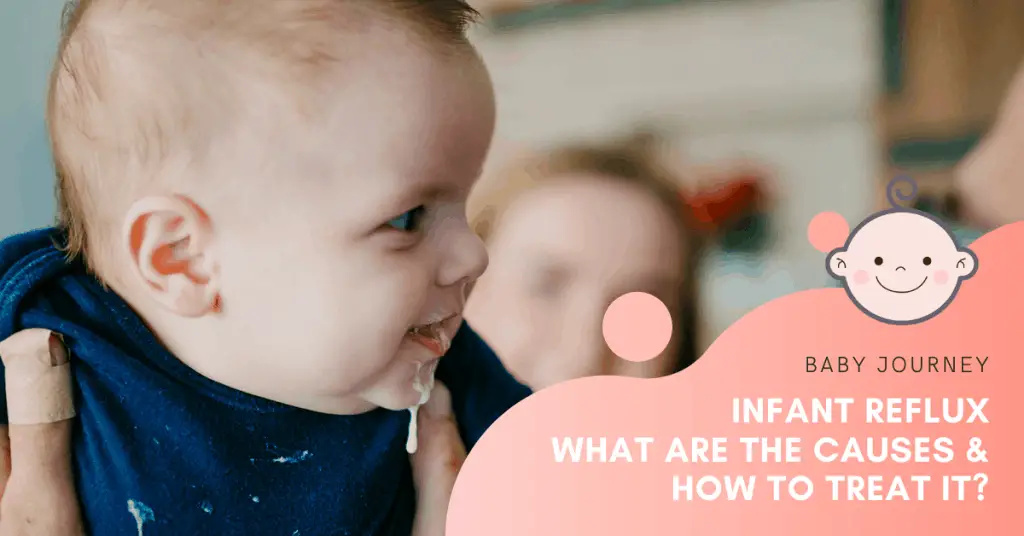It is probably safe to say that a baby proofing checklist is on parents’ minds from the moment they find out they’re pregnant. Almost immediately, you want to protect your little one. However, things really ramp up when your child starts rolling, then crawling, and finally walking!
You may be interested in: Baby Walking Before Crawling
Trying to baby proof a house seems like a huge undertaking, and while we can’t promise it will be effortless, our baby proofing house checklist will hopefully make it easier. This guide will cover everything you need to know about babyproofing all the rooms of your house to keep your little one safe, healthy, and happy!
Common Home Hazards for Babies and Kids
Your home. Cozy, comfortable, a den of hazards for your little one?! Most homes are designed for adults and older children who know things like how to navigate stairs and not to play with bleach.
They’re not set up for growing and developing babies or children who learn by exploring their surroundings.

A handful of hazards can be dangerous for little ones inside your home. The most common home hazards that frequently require baby proofing are:
- Stairs, furniture, and windows. Any high surface can pose a fall risk to small children. Injury due to a fall can be serious or fatal.
- Toxic substances or medication. Cleaners, medications, and even plant food can all pose a poison risk to children. Accidental poisoning is the second most common hazard to children. Also, make sure you go for baby safe pest control to keep your home clean from pests.
- Hot surfaces or liquids. Burns can result from stoves, irons, hair tools, hot coffee, or any surface or liquid that gets hot.
- Small items. Small items, like marbles, bobby pins, and other tiny items, can cause airway obstruction, leading to choking.
- Water. Water in gallon buckets, a bathtub, or a pool poses a drowning hazard for children who may fall in and be unable to get out.
- Hinges and railings. Hinges of doors and the gaps between railings could lead to entrapment, either of a child’s head or smaller appendages like fingers.
- Heavy objects. Heavy objects, especially furniture, could fall on your child and injure them should they choose to try and climb the object.
Paying attention to each of these hazards in every room of your house can help make your home safer for your child. Read on for our babyproof checklist and instruction on how to child proof your home.
Babyproofing The House
First, childproofing your home should begin with tackling large projects first. Start babyproofing by walking through your home with an eye for dangerous items (some parents even get to their child’s eye level and crawl) can give you an idea of what’s within reach and what you need to baby proof.
- Remove peeling or chipping paint. Older paint could be lead paint that is toxic if ingested.
- Repair or replace broken windows. A child could cut themselves or the window could give way if leaned on.
- Set your hot water heater. Hot water heaters should be set to temperatures no higher than 120 degrees Fahrenheit to avoid a bath that is too hot, causing serious burns.

- Check all smoke alarms and carbon monoxide detectors, and check that your fire extinguisher is within date.
- Place outlet covers on all electrical outlets throughout your home. These help to prevent a child from sticking anything into an outlet that could result in electrocution.
- Prevent entanglement. Secure electrical cords with cord covers and remove dangling cords from window blinds or window coverings, as they could be a strangulation hazard. The window covering safety council recommends cordless window coverings.
- Lock up all toxins. This includes cleaning supplies, products, medication, and other chemicals. Make sure they’re off limits by removing them from lower cabinets or keeping them in a locked cabinet.
- Secure furniture. Use a wall anchor to prevent furniture from falling onto your child if they try to climb.
- Use door knob covers. Door knob covers can prevent access to certain rooms and the outdoors.
- Guard stairs. Even if you have the best baby walker, stairs are very dangerous and should be secured with locking stair gates to prevent infants and toddlers from falling.
- Use baby gates or safety gates to prevent falls and keep children from unsafe areas.
- Finish repairs or renovations. If you’ve been preparing for a baby by renovating or repairing, now is the time to wrap up projects that could be dangerous for your child.
Babyproofing The Bathroom
- Keep all medications securely locked and out of your little one’s grasp in a locked medicine cabinet. This includes vitamins, natural sleep aids, wound cleaning care like ethyl alcohol, and prescription medications.
- Keep your toilet brush and/or plunger out of reach. These often disgusting tools could make your little one sick.
- Install a toilet lock for the lid. This device helps to ensure curious babies won’t accidentally fall into the toilet and drown.
- Secure large mirrors. Some floor-length mirrors are meant to be leaned or propped against a wall. These will need to be secured with furniture anchors so that they cannot fall on your little one.
- Keep scented soaps out of reach. Hand soaps with tantalizing smells or bright colors could attract your child and pose a poisoning risk if ingested.
- Never leave water in your bathtub. Furthermore, never leave the water running when you exit the bathroom. Your child should always be supervised in the bath.
- Keep a bath water thermometer handy. This can help ensure your bath water won’t scald or burn your baby.
Babyproofing The Kitchen
- Invest in cabinet locks to babyproof all your cabinets. Whether it’s cutlery or heavy cookware, you don’t want your child to access any of your kitchen items as part of childproofing the kitchen.
- Don’t keep knives within reach. It’s wise to avoid using knife blocks or magnetic knife holders that keep sharp objects where your child can reach them.
- Consider stove knob covers. Stove knob covers help to keep your little one from being able to turn stove knobs that could create flames or hot surfaces and cause burns.
- Lock everything. If you have a double oven or an oven that is close to the ground, an oven lock can prevent your child from opening the door and receiving burns. You will also want to lock the fridge, freezer, dishwasher, garbage disposal, and any unsafe areas using safety straps or baby-safe locks.
- Secure your fridge to the wall. Should your child be tempted to climb the fridge, securing it to the wall can prevent tipping.
- Refrain from glass tabletops. If you have a breakfast nook table in your kitchen or a dining table, it’s best to avoid glass table tops. They can be unstable and dangerous to children if they were to break or fracture.
- Mount your microwave, or keep it out of reach. It is a heavy object that could topple on your little one.
- Store your trash can in a locked pantry, out of sight, or with a locked lid. Raw foods, leftovers, and trash can harm children.
Babyproofing The Living Room
- Cover sharp corners and sharp edges with foam or corner guards that protect babies in case they fall.
- If you have hard floors like wood or tile, lay down a non-slip rug or baby play mat to keep the surface soft for tummy time activities.

- Clear clutter. Your living room can be full of choking hazards. Get down to your baby’s level and remove all dangerous objects that could be a choking hazard.
- Fireplace dangers. There are different ideas of how to babyproof a fireplace; you can use a gate or plan on not using it and secure or deactivate the controls. Regardless of your choice, be sure to put away fireplace tools and make sure all your hearth and mantle decor is babyproofed as well, which includes securing heavy picture frames.
Babyproofing The Nursery
Yes, even your little one’s room will need to be babyproofed.
- Make decor kid-friendly with soft furniture that is safe for the baby to explore.
Related: Montessori Nursery Ideas
- Lock and secure windows. If your nursery has windows, make sure they are inaccessible to your child and secured should your little one be able to reach them.
- Avoid lamps. Floor lamps and table lamps can be easily toppled and dangerous; it’s best to avoid them and use baby-friendly lighting.
- Follow all baby crib and safe sleep guidelines, making sure your crib is safe for sleep and play. This includes removing crib bumpers, using a fitted sheet, and checking crib slats to meet current safety standards.
- Keep fingers safe with door guards. Bi-fold closet doors and toy box hinges can hurt little fingers.
- Consider a glider that has a locking mechanism to prevent movement when the chair is not in use.
Babyproofing The Laundry Room
There are lots of temptations in the laundry room to watch out for!
- Keep laundry soap inaccessible. Laundry pods, with their bright colors and smells, can be especially tempting.

- Lock the washer and dryer doors.
- Don’t pre-treat laundry within reach. Leaving harmful substances on your clothes or soaking them in a bucket of laundry can be dangerous to exploring little ones.
- Be wary of tight spaces. Check the placement of your machines.
Babyproofing The Home Office
If you work from home, don’t forget this space!
- Secure drawers of office items with childproof magnetic locks or other childproof locks.
- Remove rolling chairs that could pinch fingers or toes.
- Secure heavy furniture. Make sure that filing cabinets, your desk, and other furniture are secured to the wall to prevent tipping.
- Consider your state of mind. This is one area where you will likely be very distracted, so it’s best to make sure this room is as safe and baby-proofed as possible.

Final Thoughts
You can use a baby proofing service, but if you’re doing it on your own, we hope you found this article helpful and that it has taught you how to babyproof your home!
There are many different options of locks, babyproofing guards, and even a child proofing kit that can make this seemingly monumental task a bit easier. Tell us in the comments if you have any babyproofing tips to share!
–




